Year 8 Lines and Angles Worksheets
Alternate and Corresponding Angles (A)
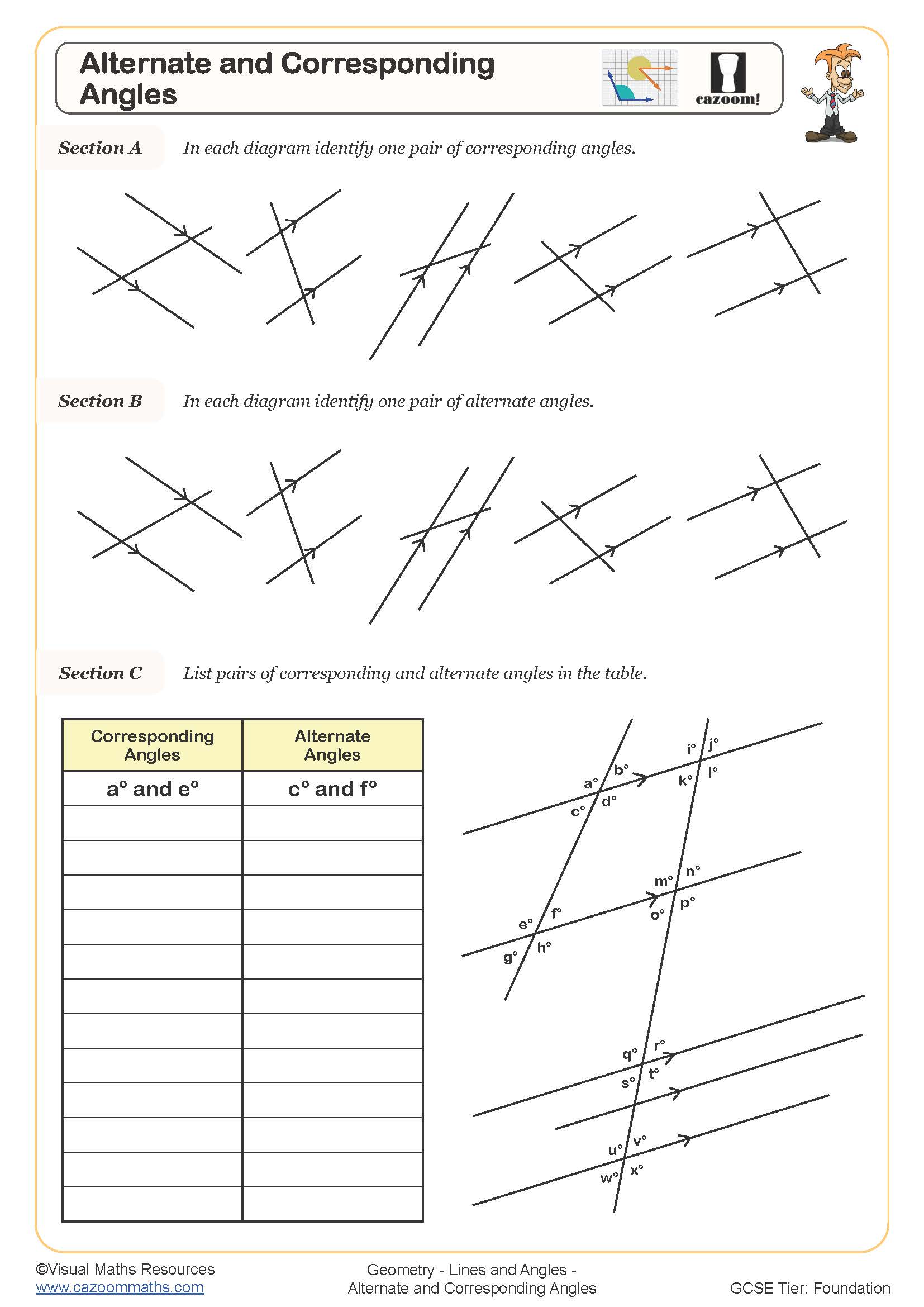
Alternate Angles
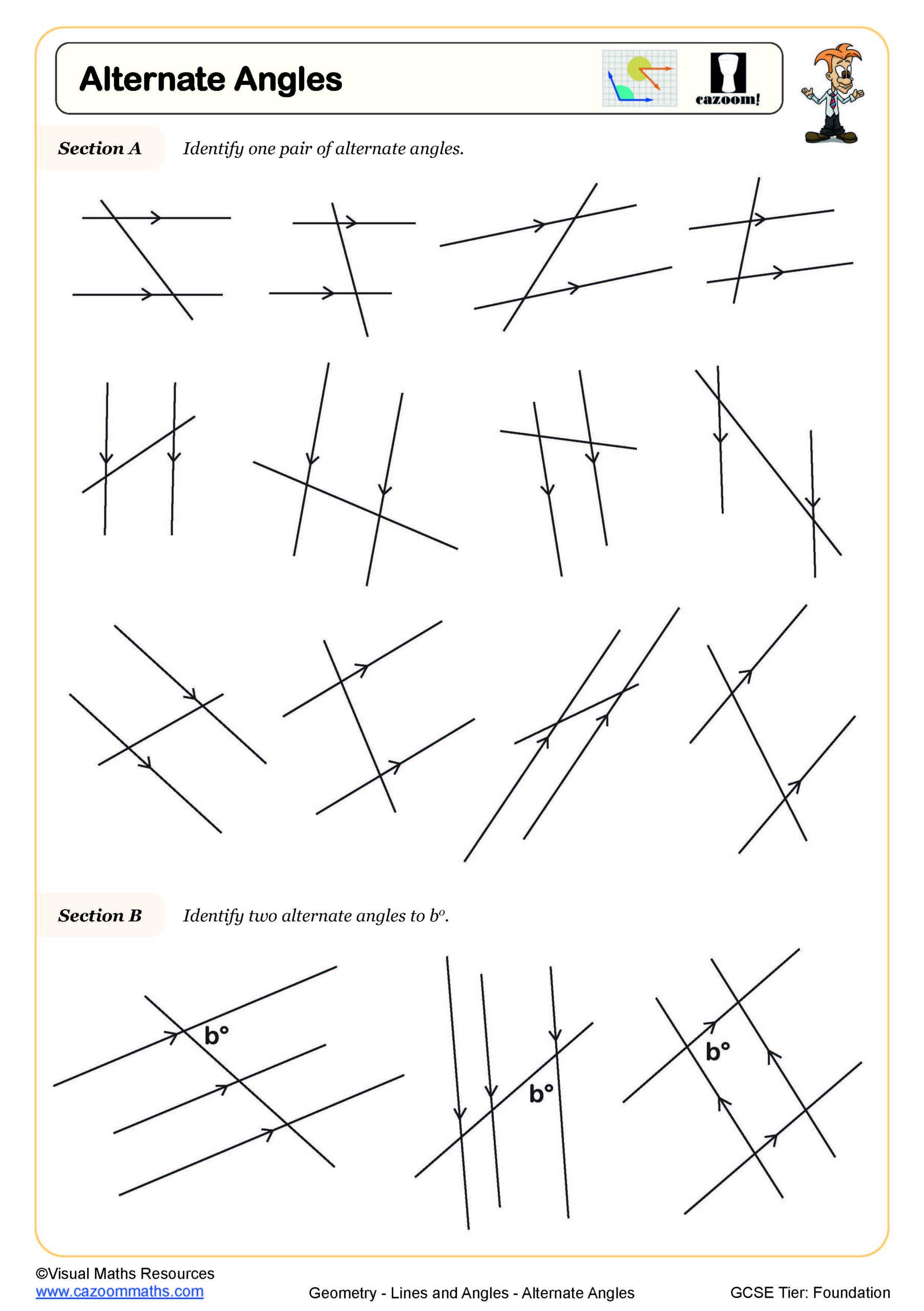
Angles Around a Point
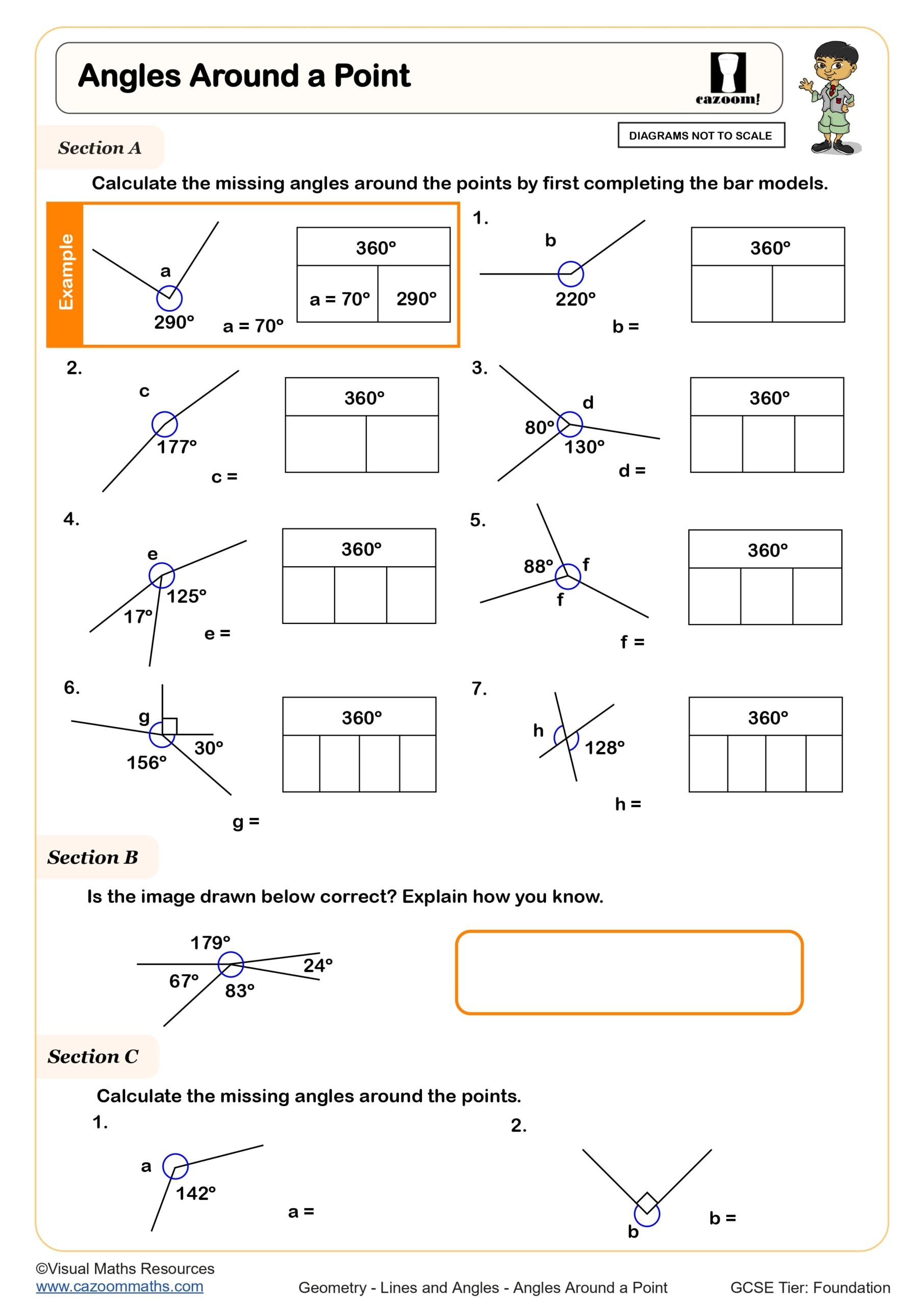
Angles in Isosceles Triangles
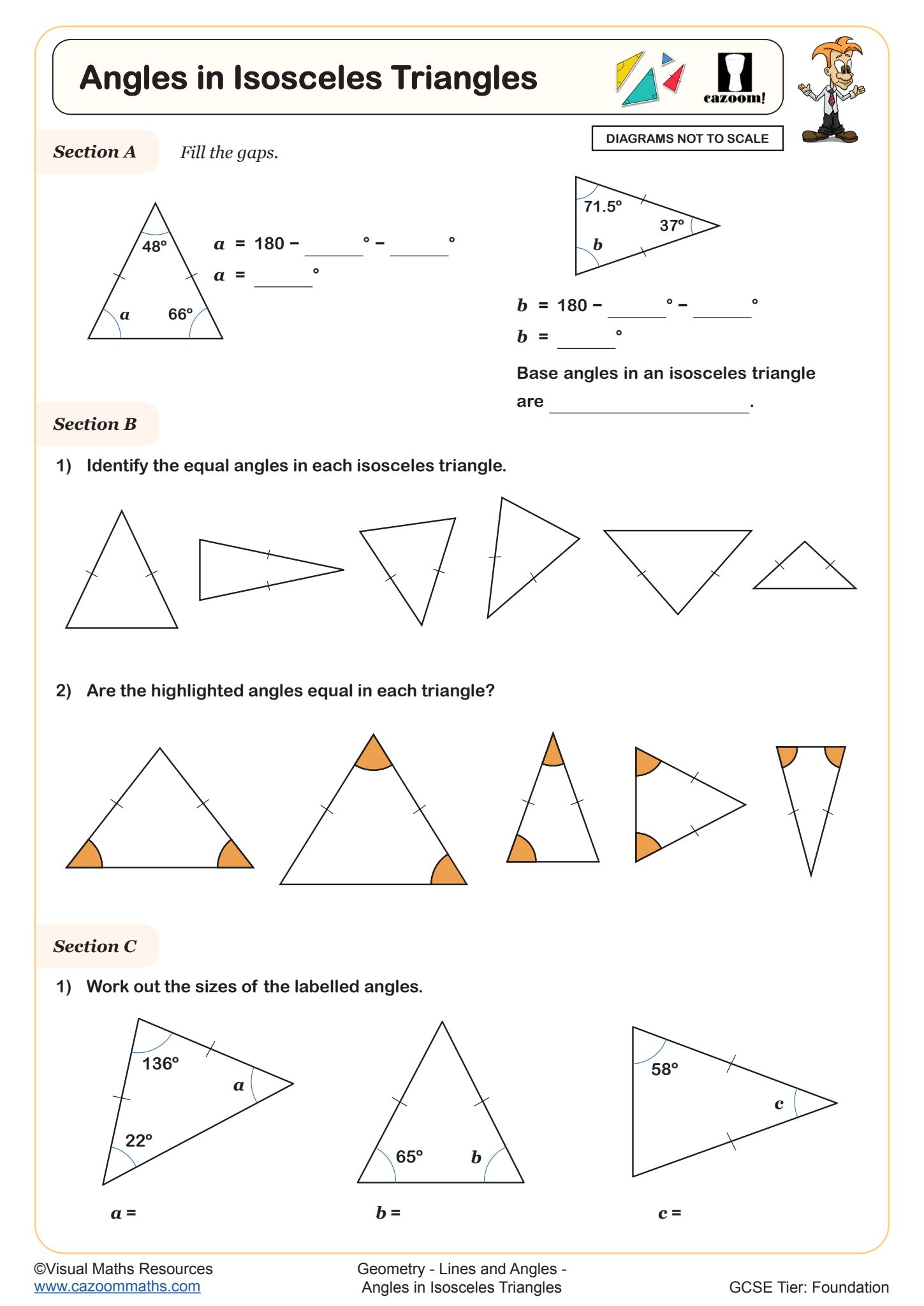
Angles in Kites

Angles in Parallel Lines - Choosing the Correct Rule
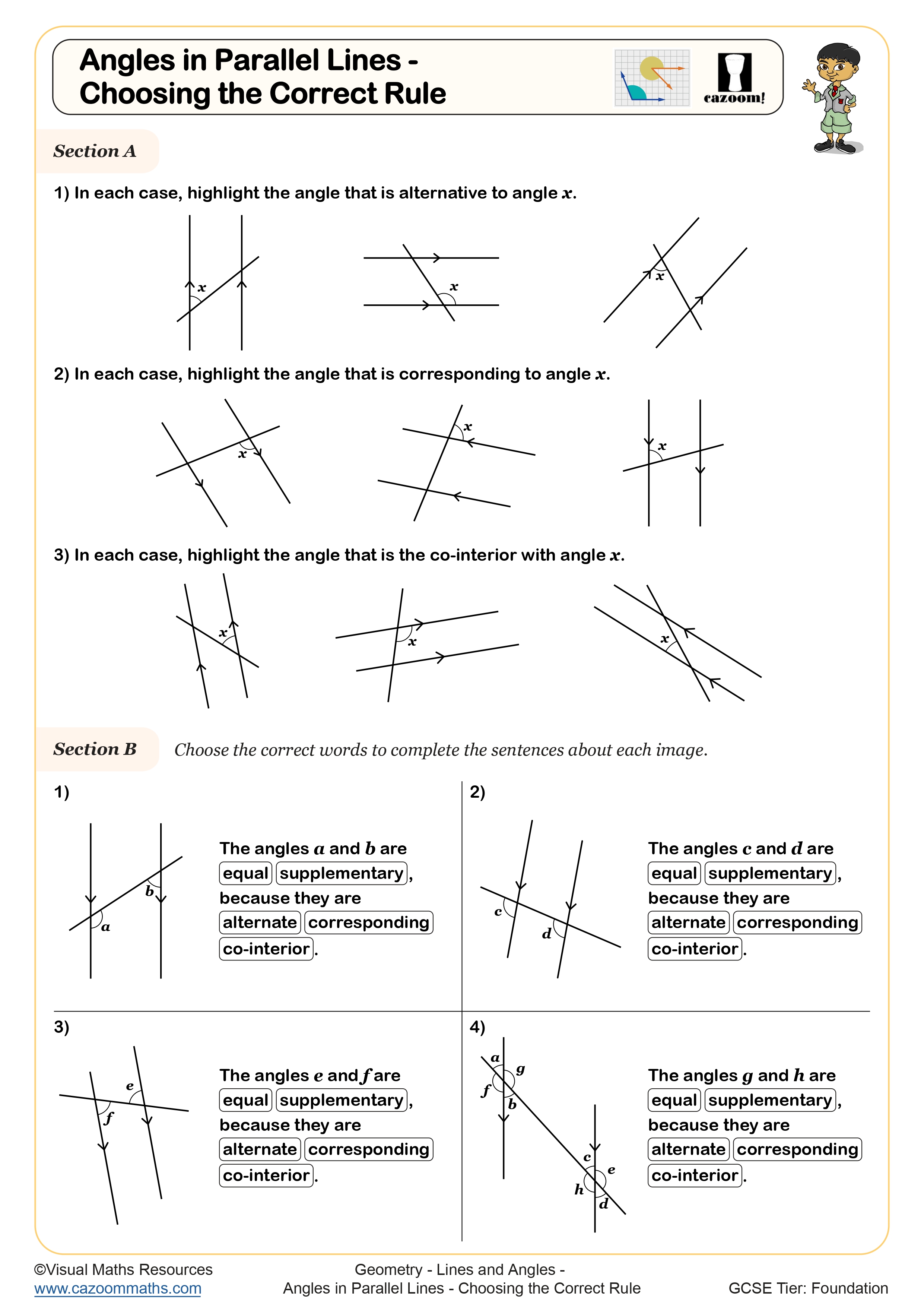
Angles in Quadrilaterals
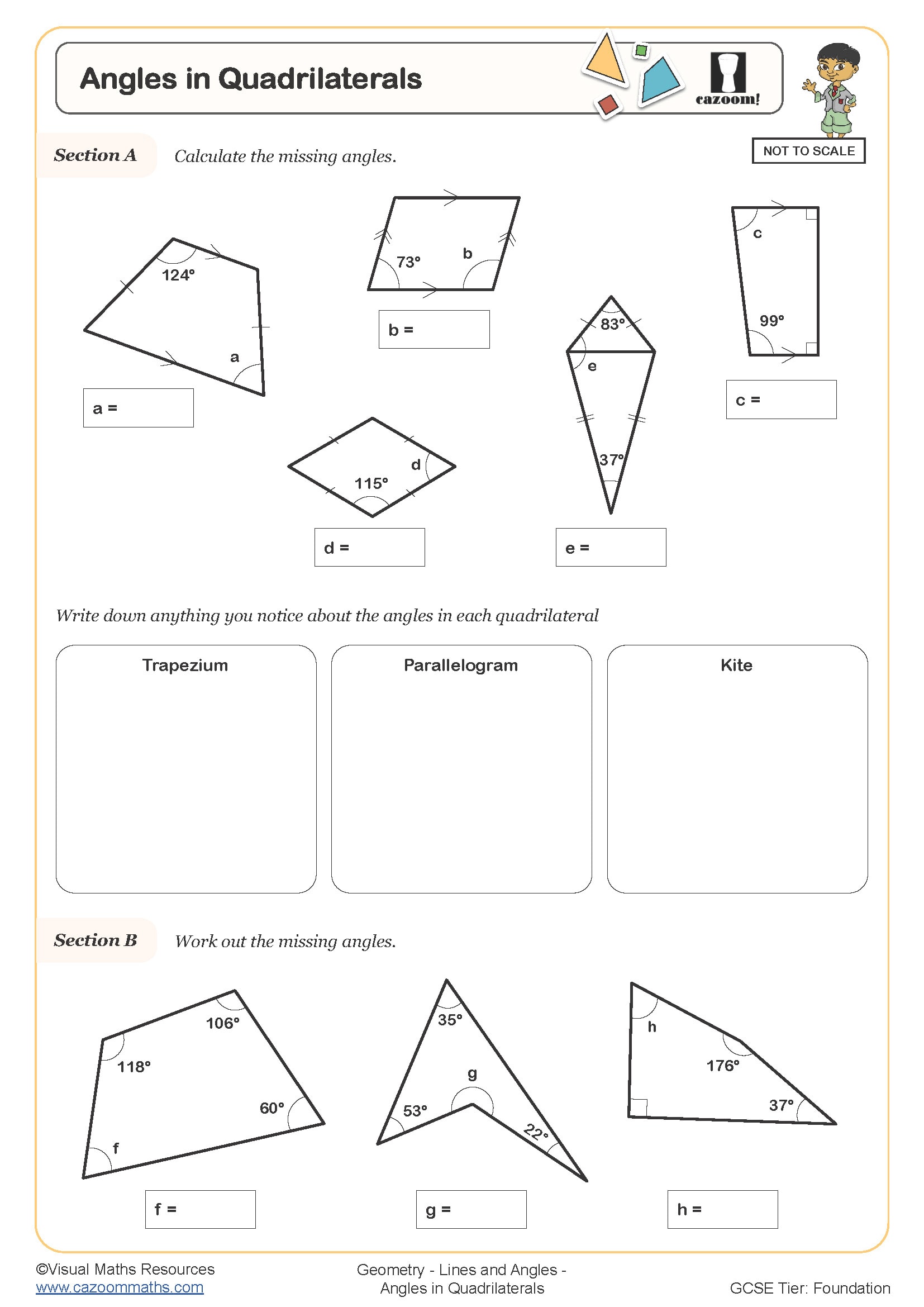
Angles in Triangles (A)
-Worksheet.jpg?w=3840)
Angles in Triangles (B)
/Cazoom-Maths-Lines-and-Angles-Angles-in-Triangles-(B-Worksheet.jpg)
Angles on a Straight Line
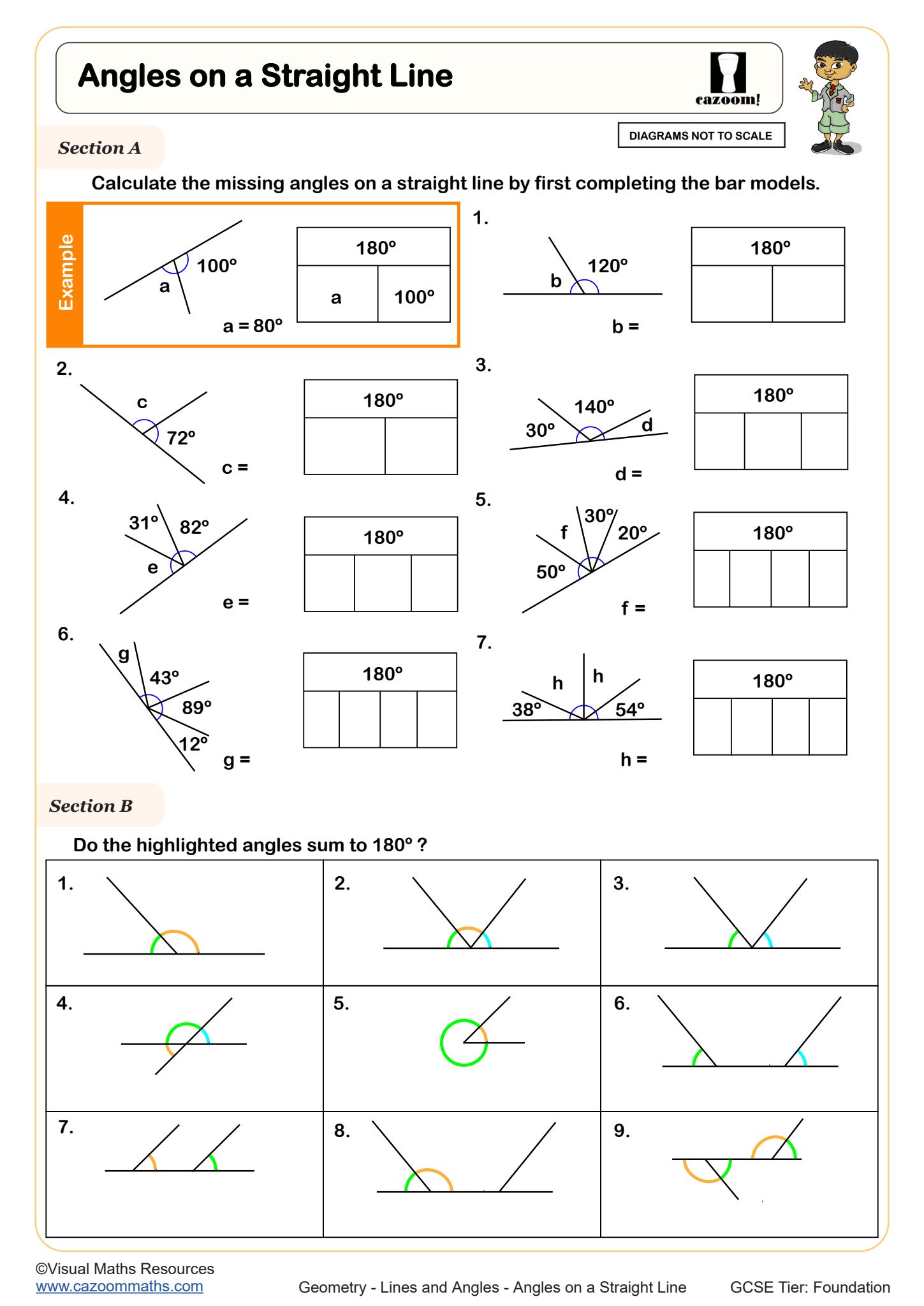
Angles on Parallel Lines (A)
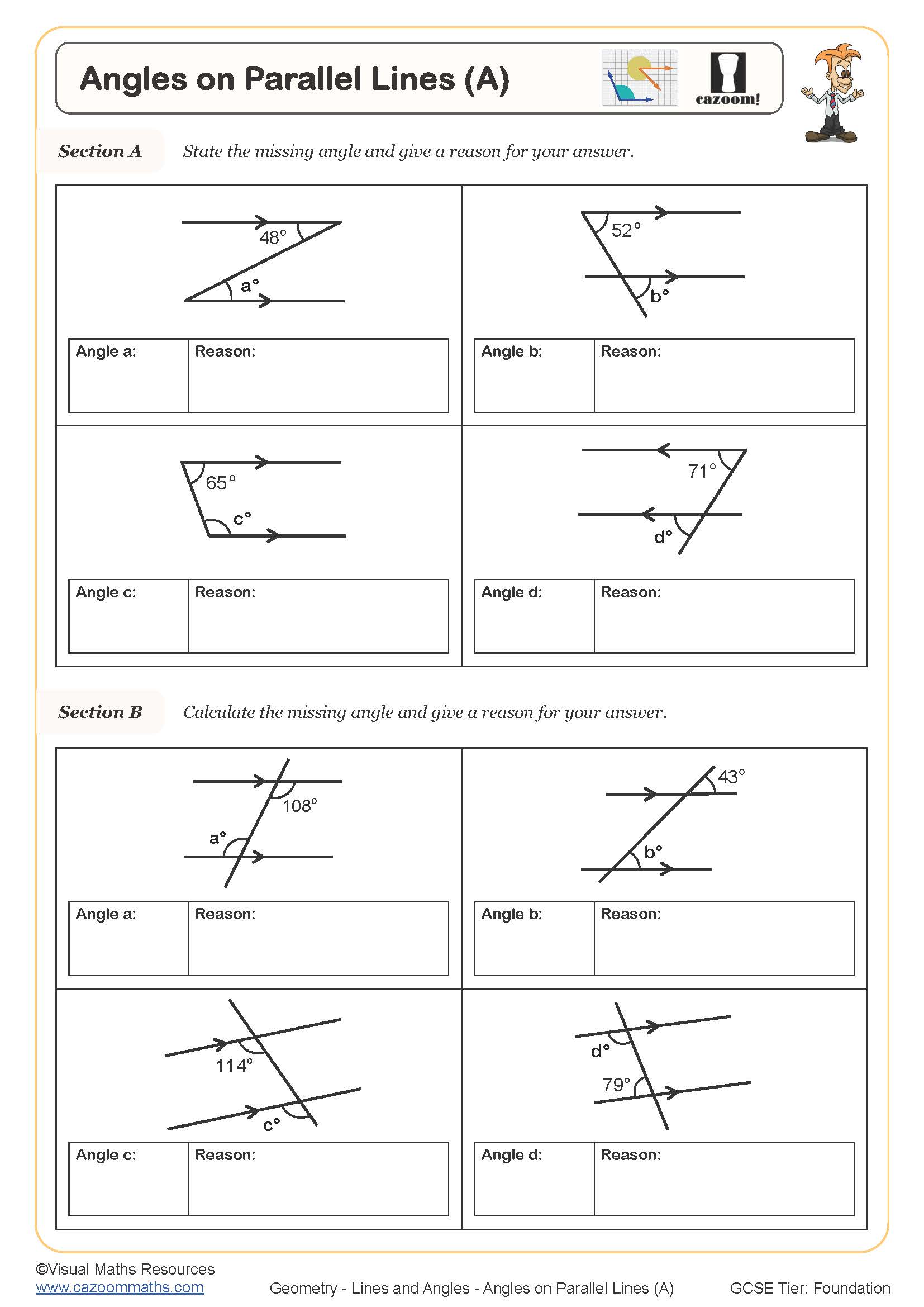
Angles on Parallel Lines (A) (With Clues)
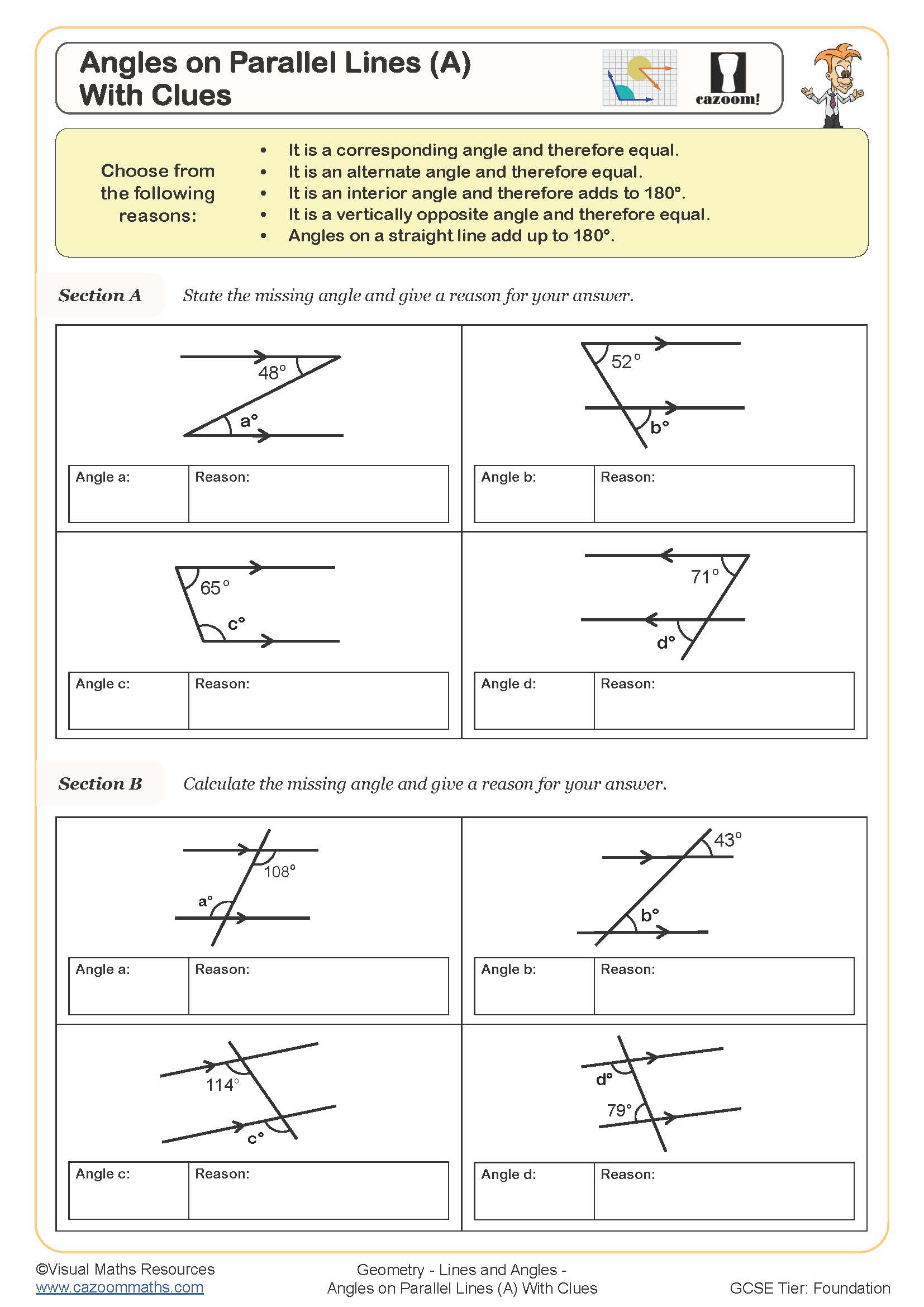
Angles on Parallel Lines (B)
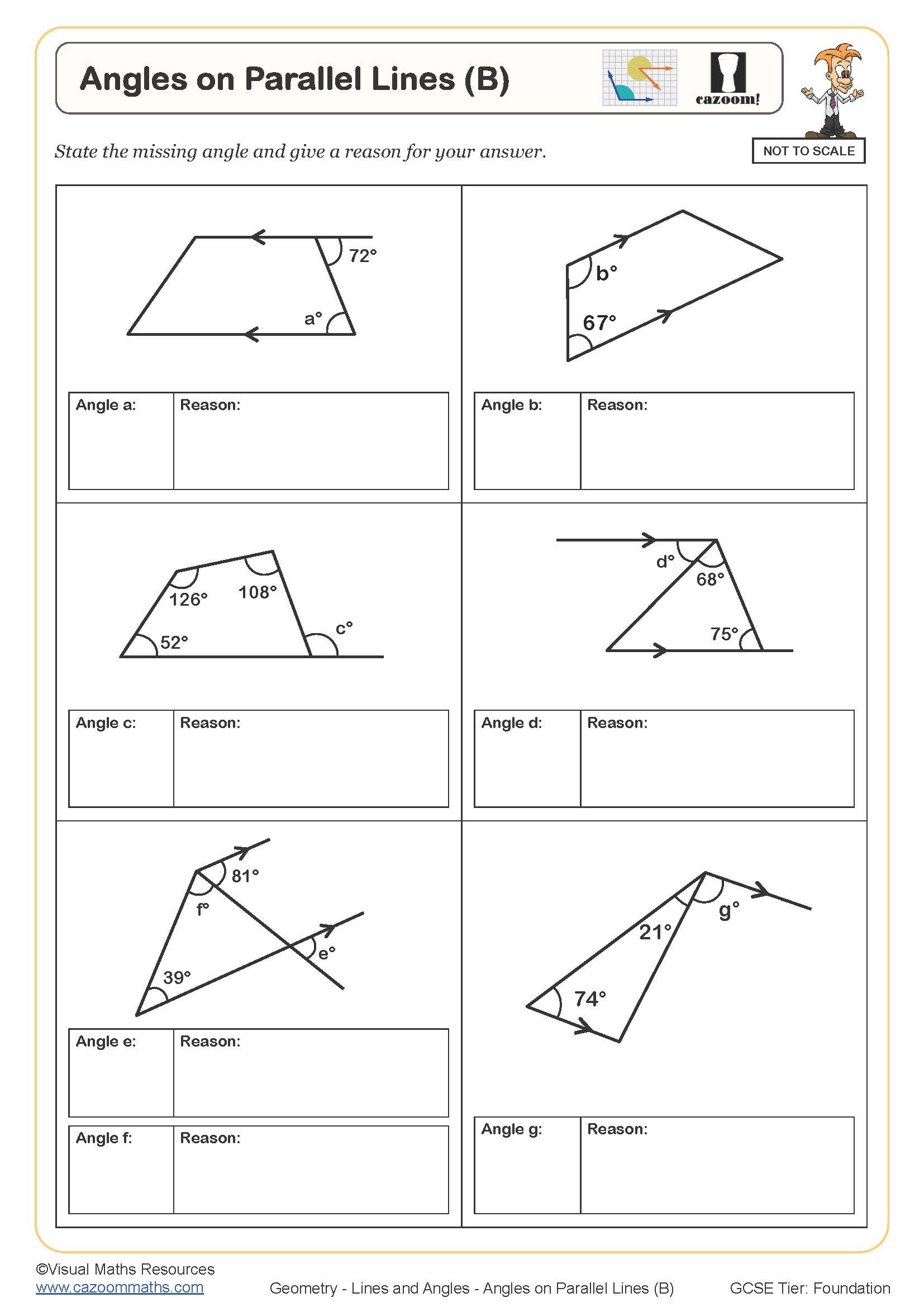
Angles on Parallel Lines (B) (With Clues)
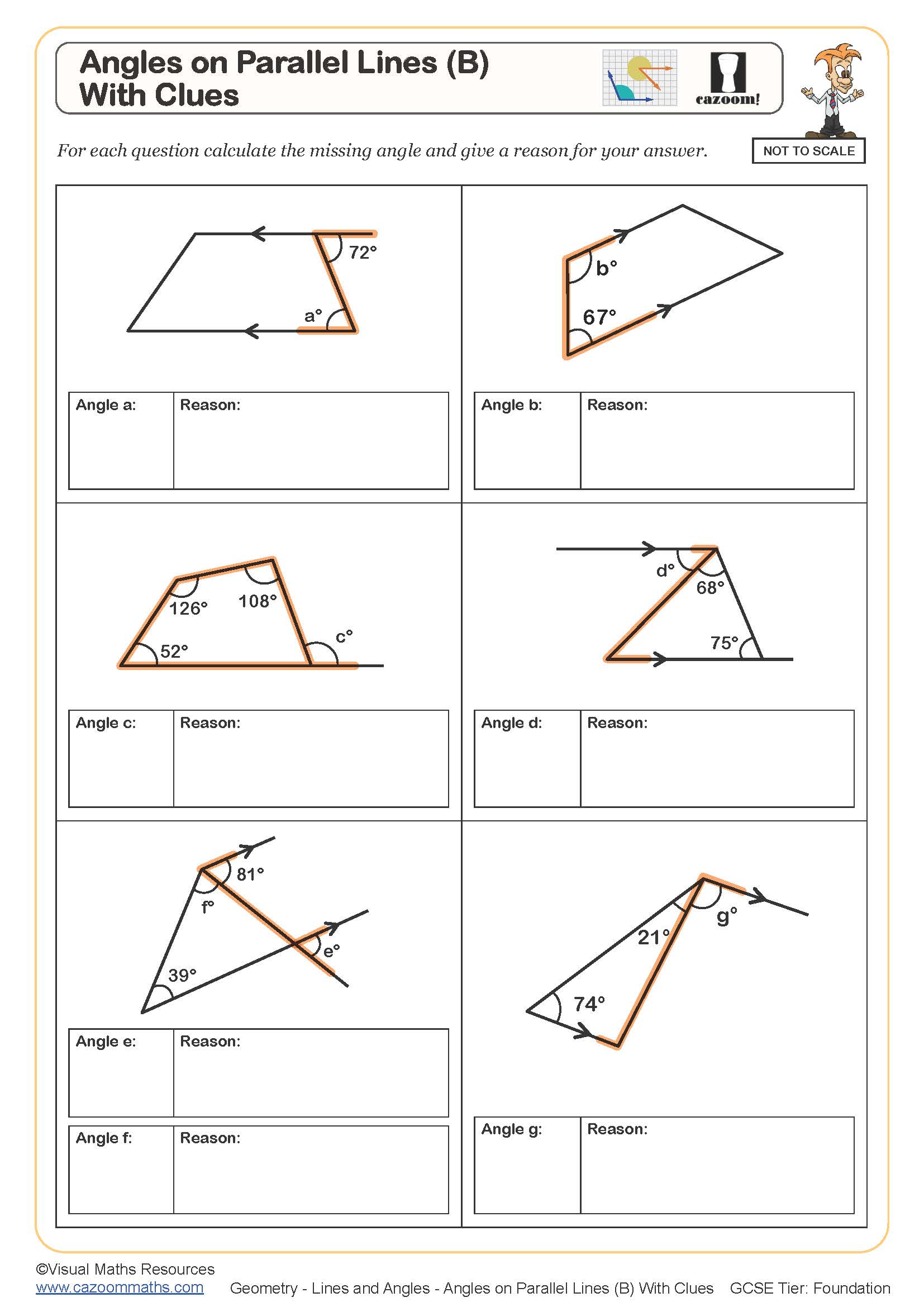
Calculating Angles (A)
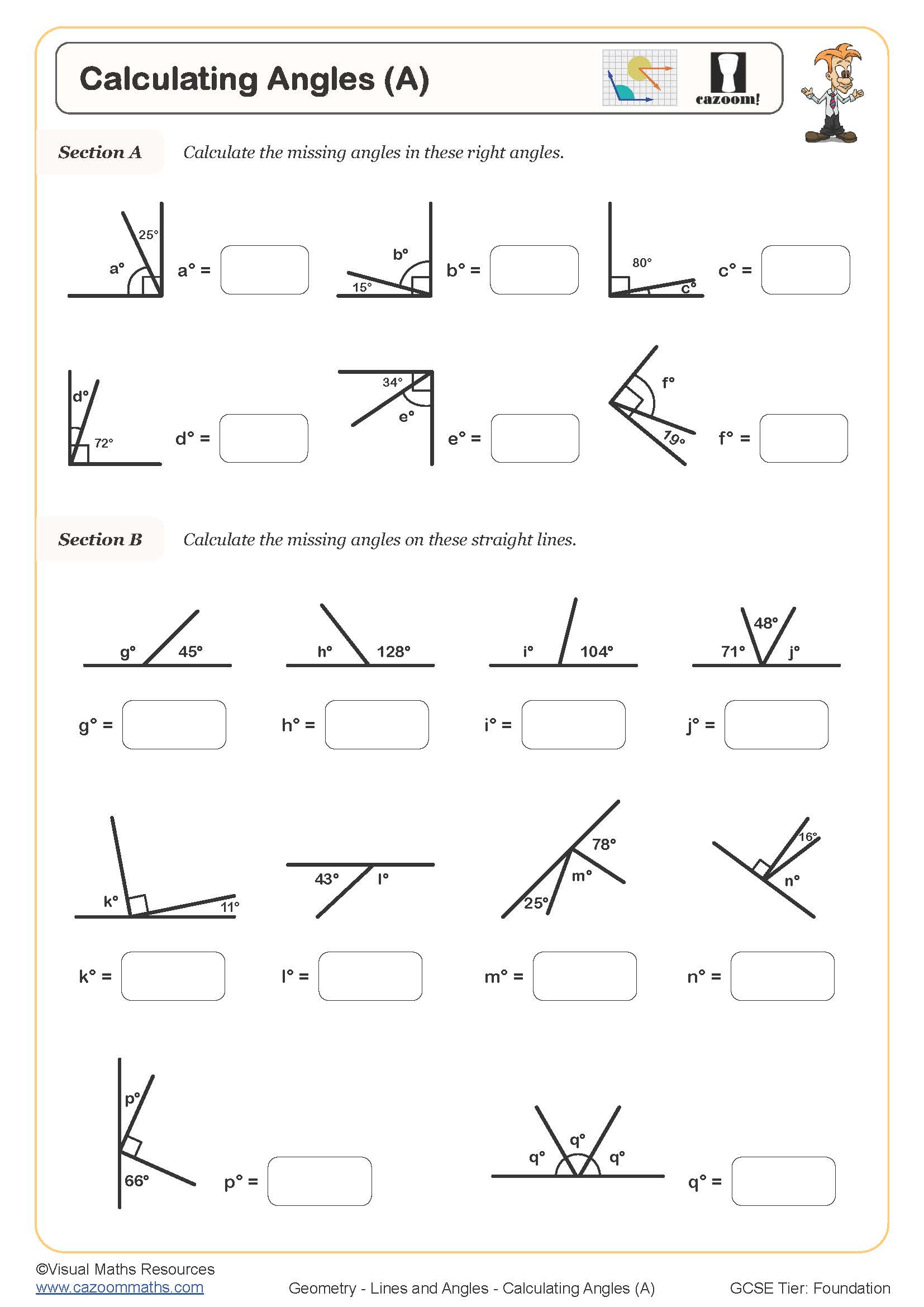
Calculating Angles (B)
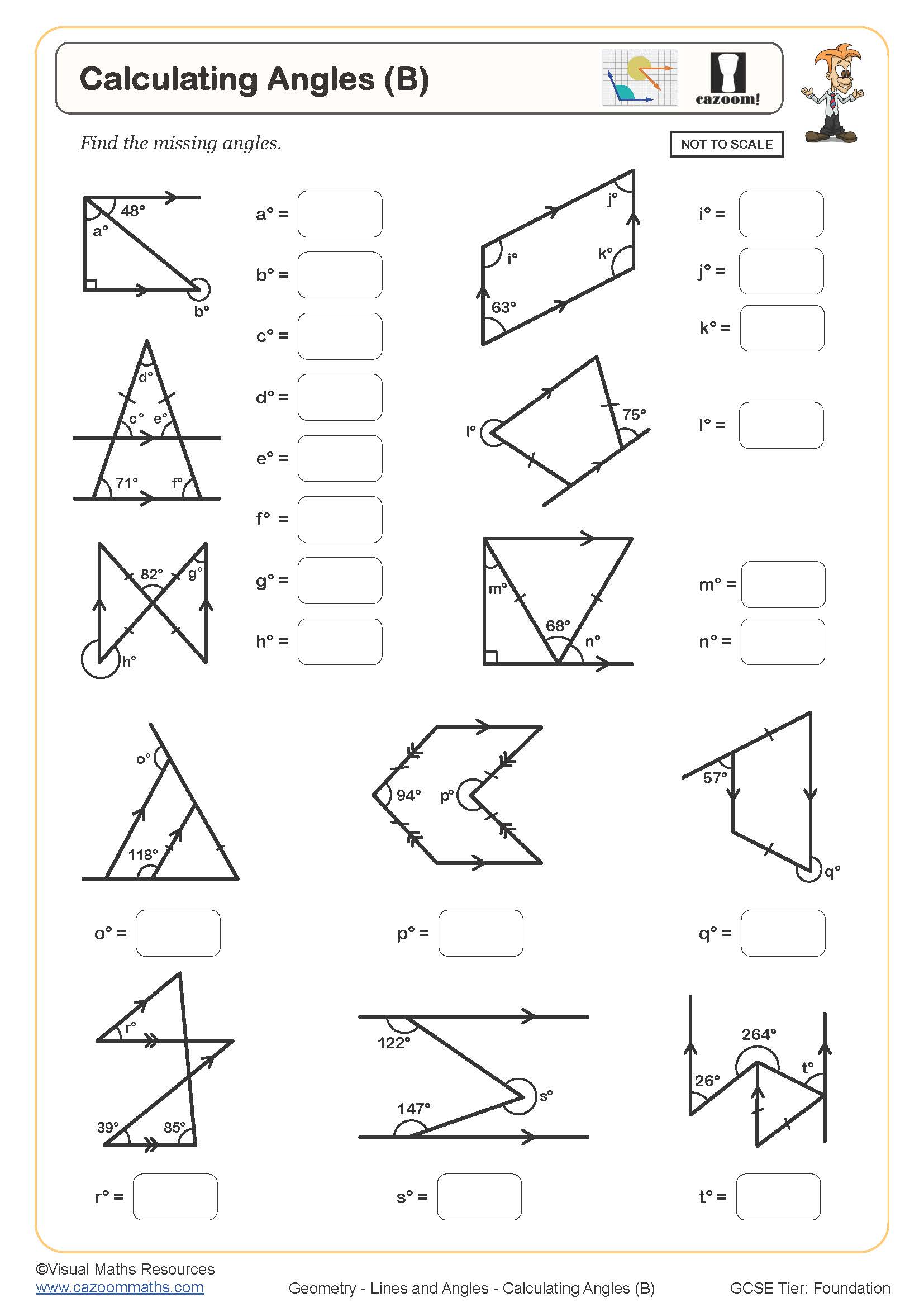
Calculating Angles (B) (With Clues)
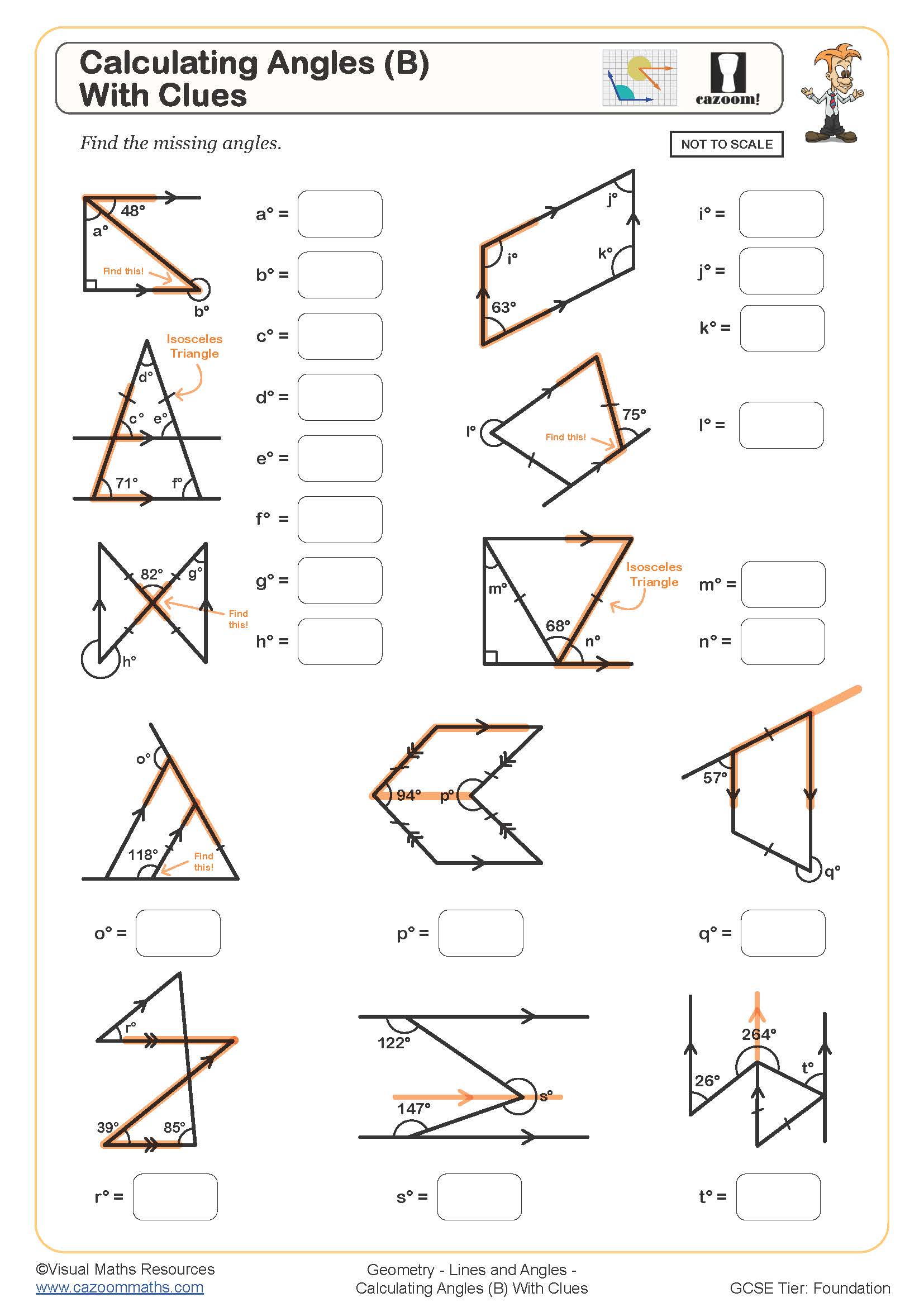
Co-interior Angles
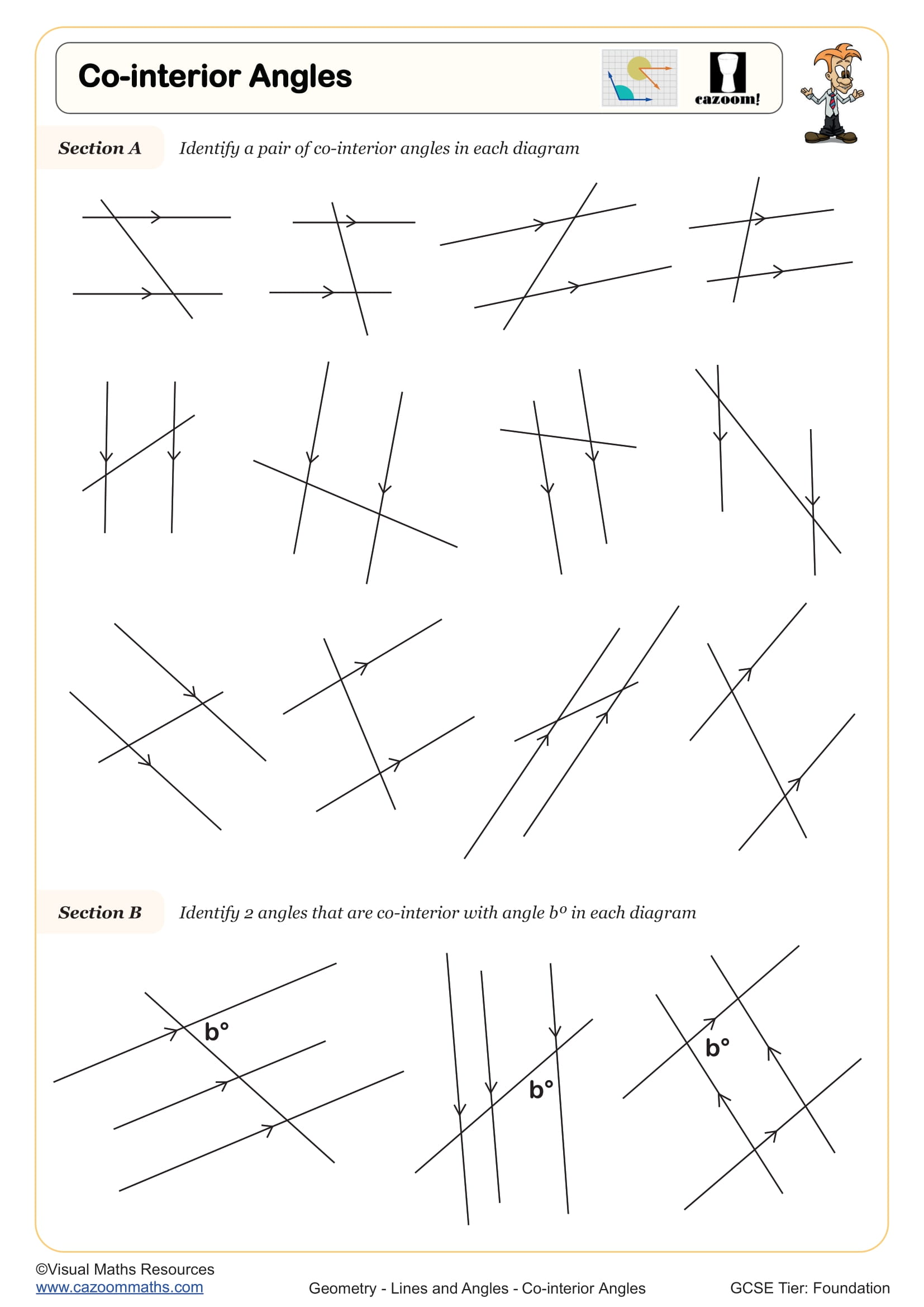
Corresponding Angles
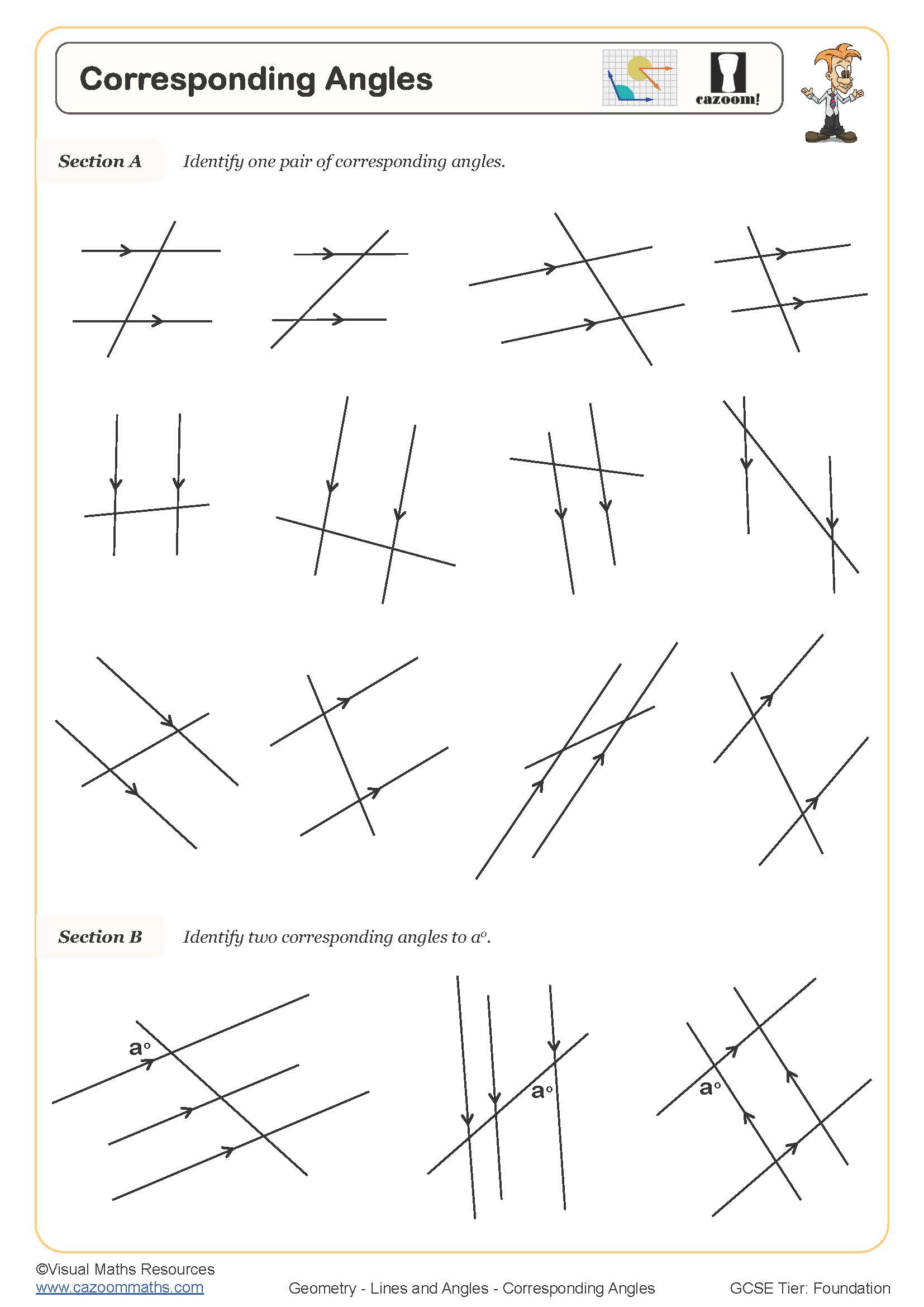
Crack the Code - Angles
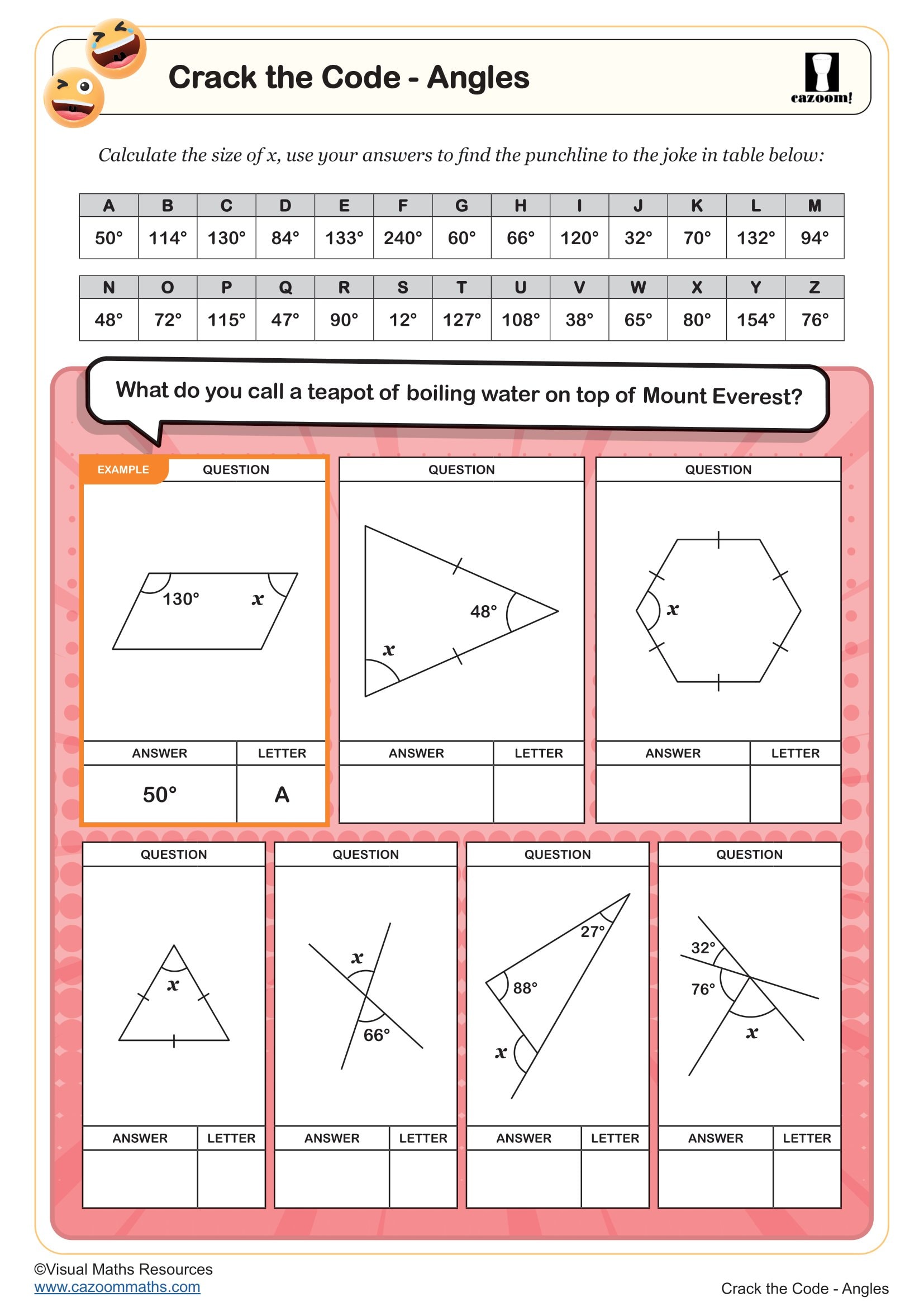
Describing Angles
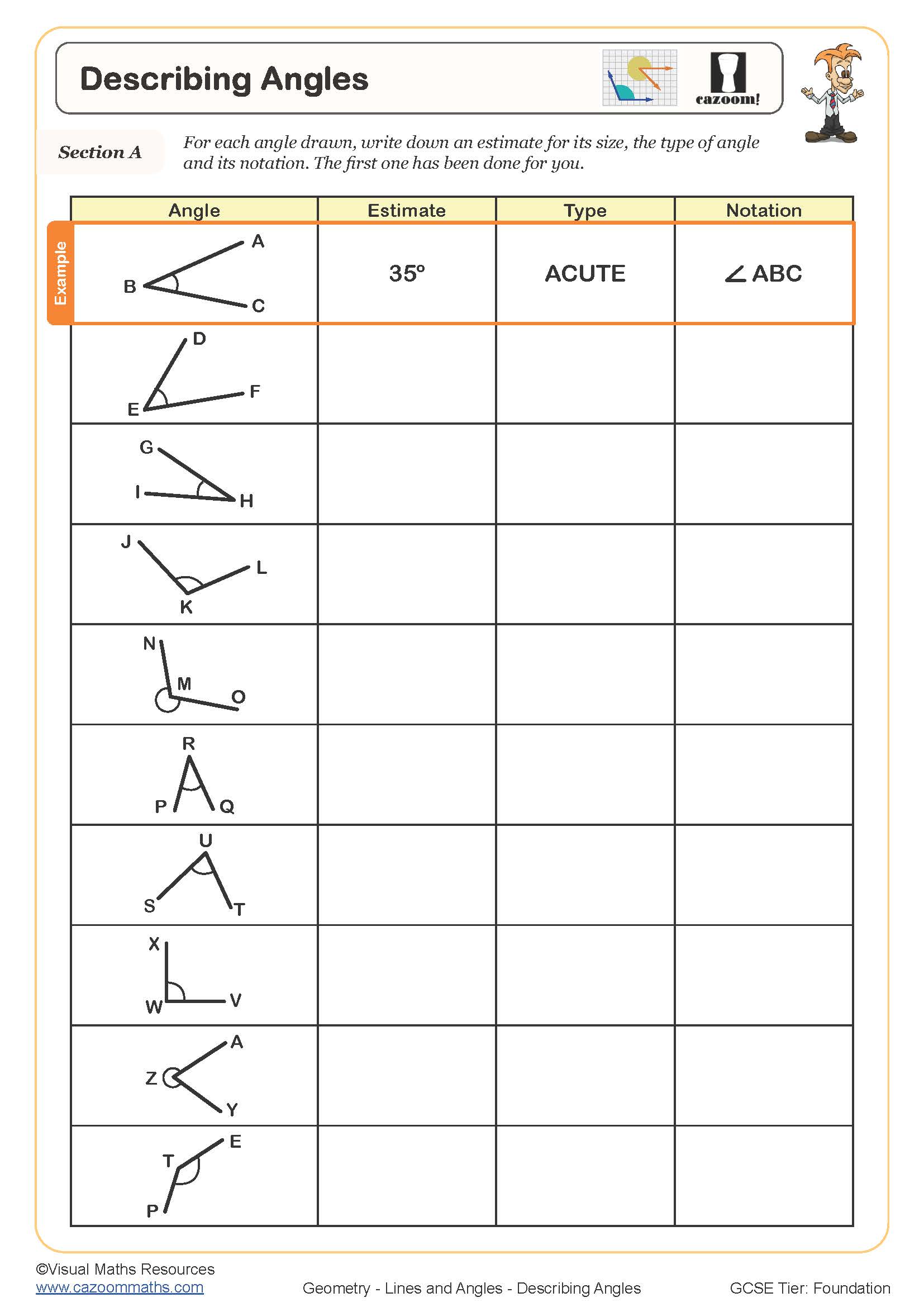
Drawing and Measuring Angles
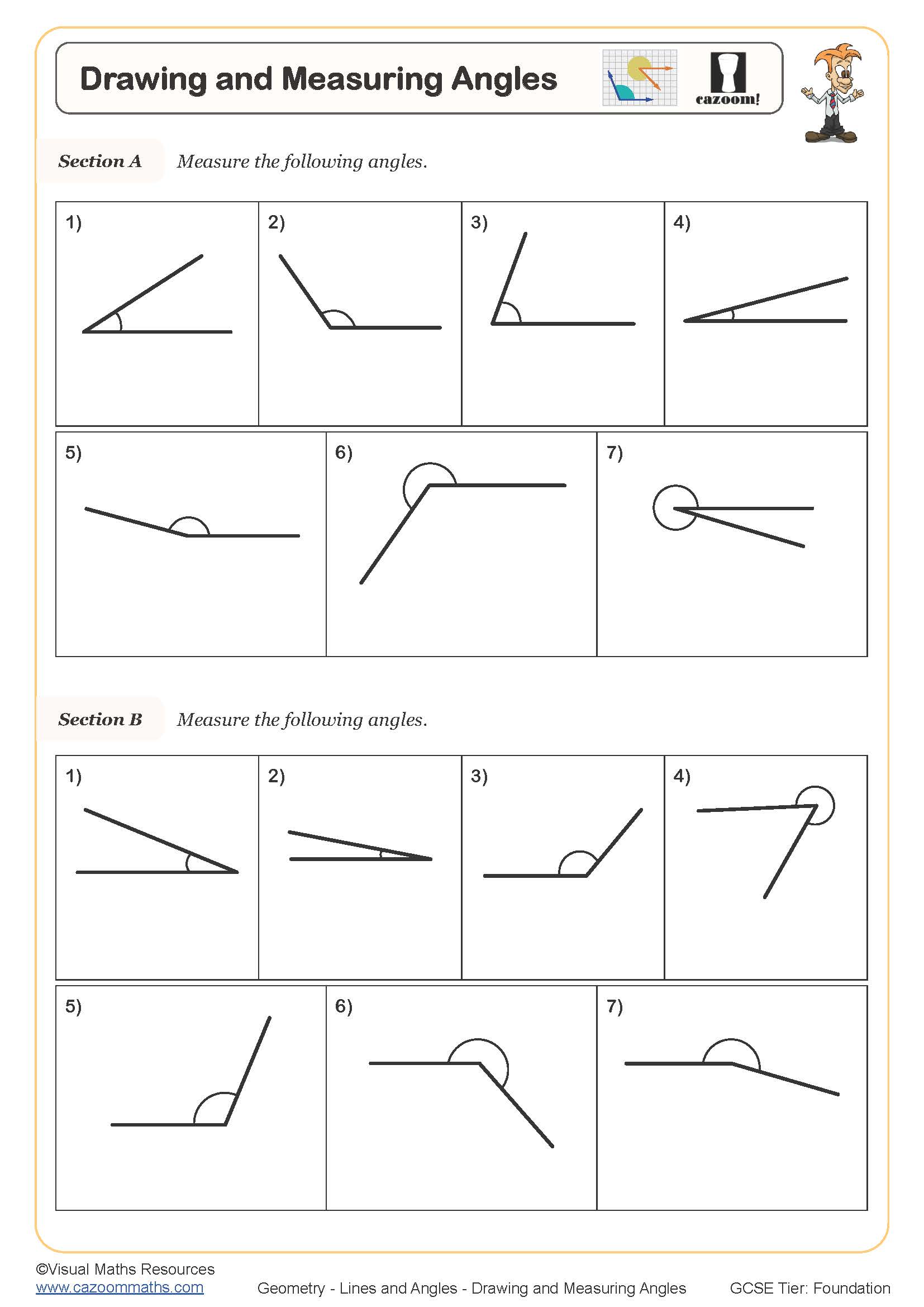
Estimate and Meaure Angles using Angle Notation
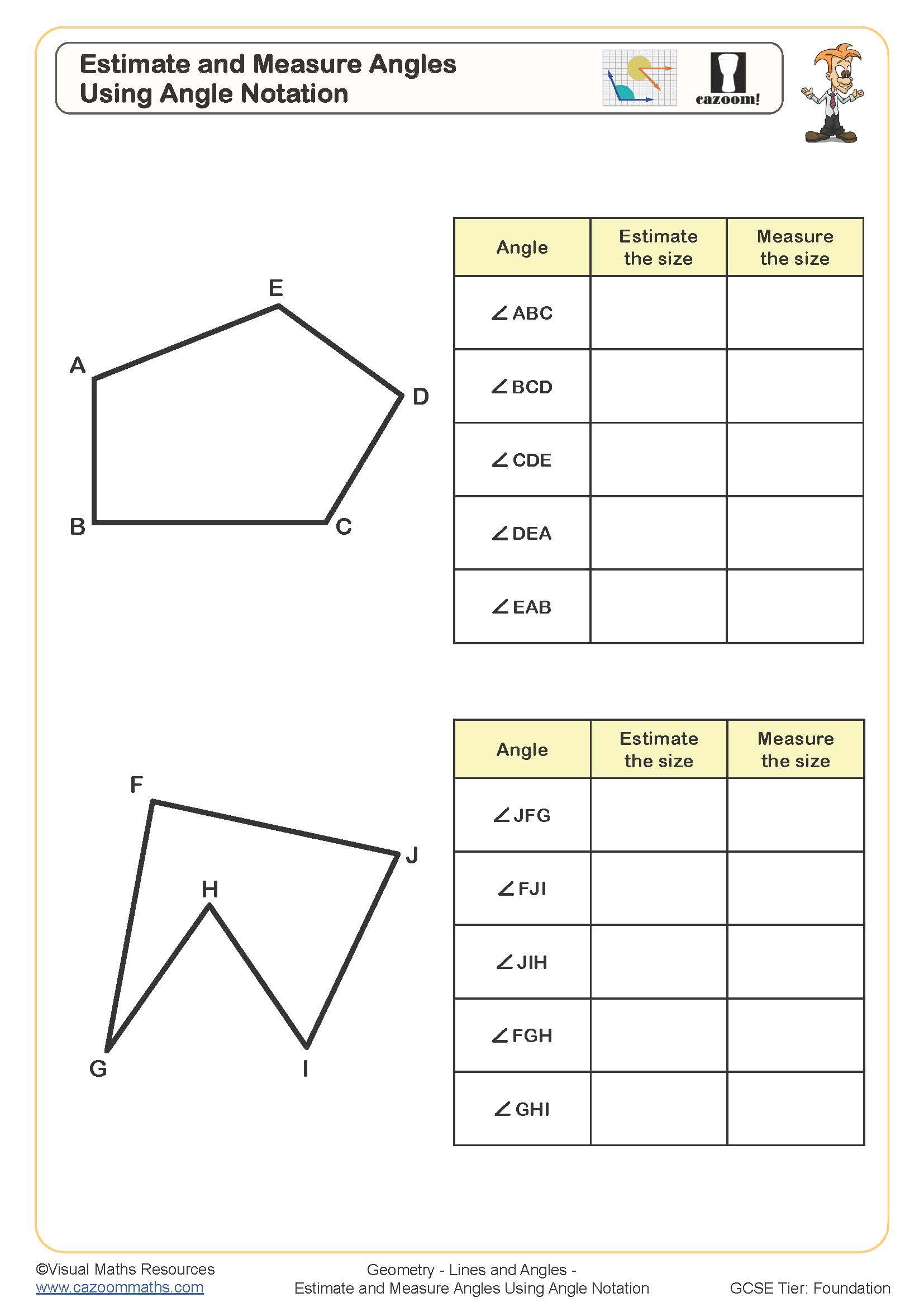
Forming and Solving Equations Involving Angles (B)
-Worksheet.jpg?w=3840)
Parallel and Perpendicular Lines
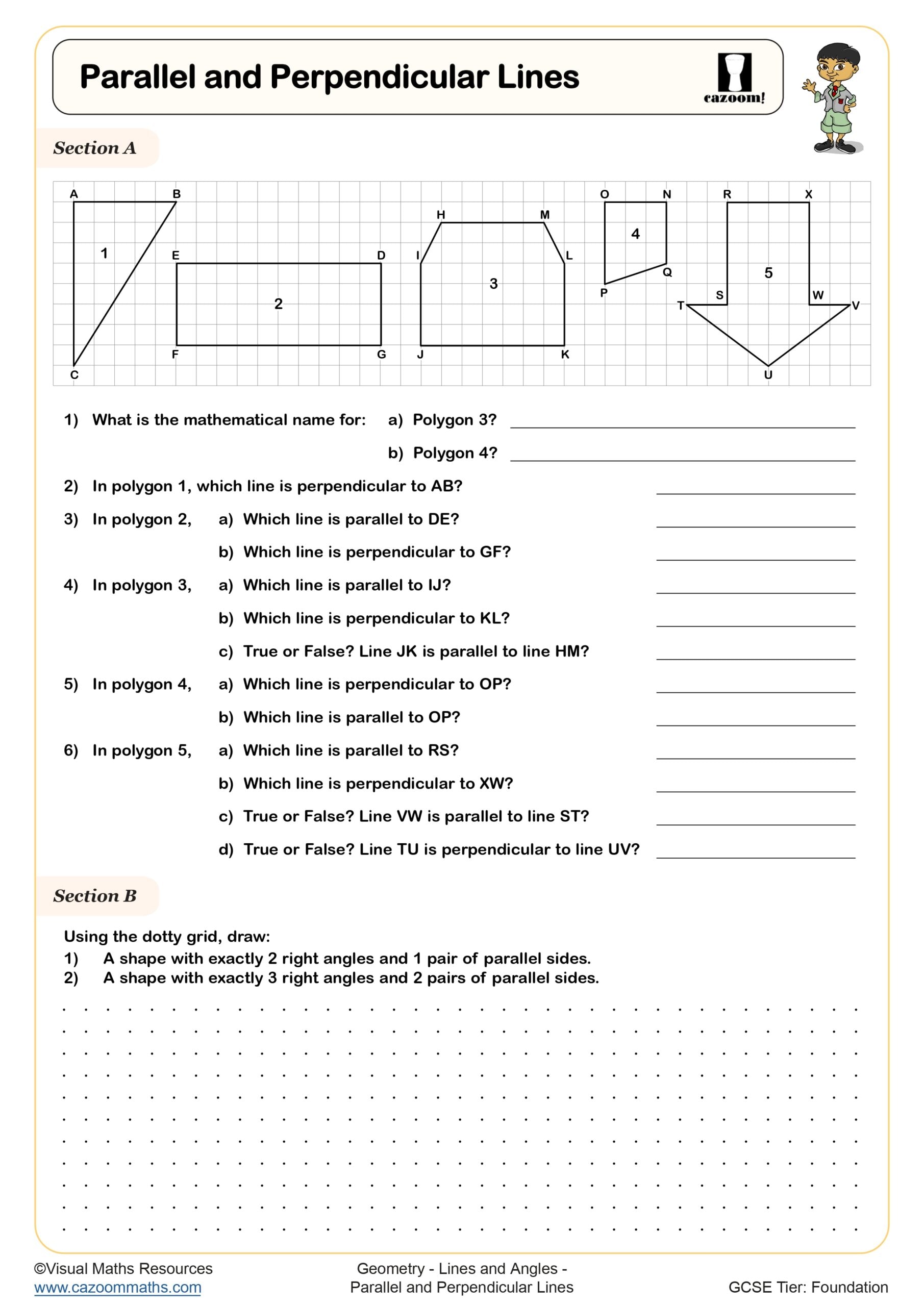
Vertically Opposite Angles
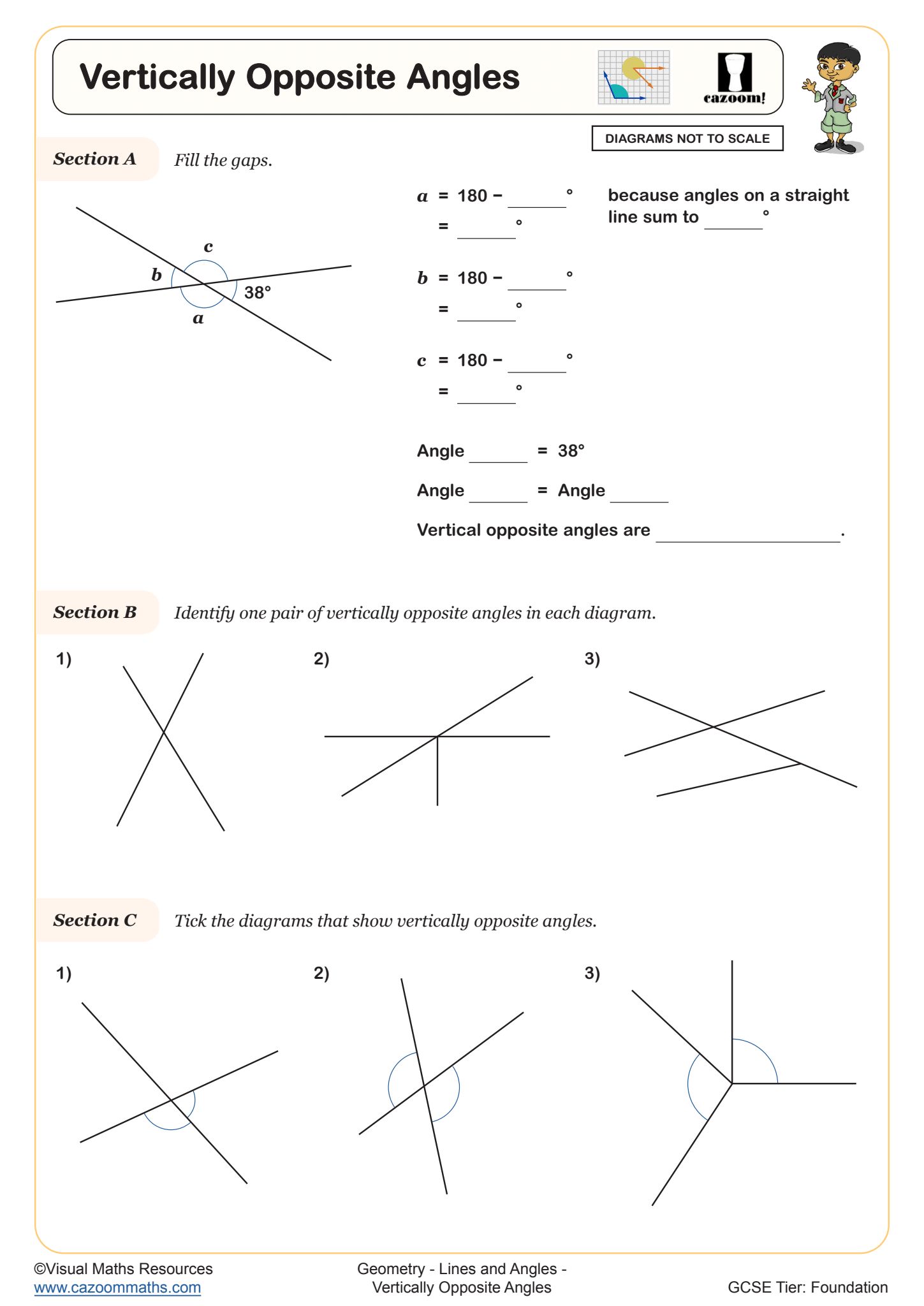
Support Your Child’s Learning With Our Printable Year 8 Geometry Worksheets
Systematic angle practice during Year 8 transforms students from calculating basic angles to solving multi-step geometric problems requiring logical deduction. The Year 8 curriculum introduces parallel line theorems, polygon properties and algebraic angle equations that require advanced thinking abilities. Students who participate in weekly structured worksheets show better spatial reasoning test results and improve their ability to handle unknown geometric problems. The systematic progression allows students to develop conceptual understanding and procedural fluency simultaneously, which produces mathematicians who can explain their thought process instead of following memorised procedures. The practice of various problem types prevents students from developing misconceptions that typically occur when angle work is done hastily or irregularly.
Specific learning benefits include:
• Mastery of parallel line angle properties
• Development of geometric proof techniques
• Enhanced spatial visualisation skills
• Strengthened algebraic thinking through angle equations
• Improved accuracy in technical drawing
• Foundation for trigonometry concepts
• Preparation for circle theorems
Curriculum Coverage: KS3 Worksheet Topics and Skills Your Pupils Will Learn
These worksheets progress systematically from concrete angle measurements through pictorial representations to abstract algebraic problems, ensuring deep conceptual understanding emerges naturally. Each resource includes worked solutions demonstrating clear mathematical reasoning steps. The collection addresses all essential Year 8 angle concepts whilst providing extension opportunities for advanced learners.
The worksheets in this collection include:
• Measuring and Drawing Angles — practising protractor skills and construction techniques
• Angles on a Straight Line — calculating missing angles using 180-degree properties
• Angles Around a Point — finding unknown angles totalling 360 degrees
• Vertically Opposite Angles — identifying and calculating equal angle pairs
• Angles in Triangles — applying the 180-degree triangle rule systematically
• Angles in Quadrilaterals — exploring 360-degree quadrilateral properties
• Angles in Parallel Lines — mastering alternate, corresponding and co-interior angles
• Interior Angles in Polygons — calculating angles in regular and irregular shapes
• Exterior Angles of Polygons — understanding external angle sum properties
• Mixed Angle Problems — combining multiple angle rules in complex scenarios
Worksheets vs. Apps: Why Year 8 Lines and Angles Resources Win Every Time
These worksheets address common classroom challenges through carefully scaffolded exercises that accommodate different learning paces without compromising mathematical rigour. The worksheets contain a progressive level of difficulty, which enables teachers to differentiate instruction through one resource collection without needing to create separate versions for different skill levels. The diagrams present themselves in a clear manner, which helps students concentrate on mathematical problem-solving instead of spending time deciphering confusing illustrations. The answer sheets display full work examples that teach presentation standards and show problem-solving methods which students would not find on their own. The combination of practice exercises with investigative activities keeps students interested while they learn procedural skills. Teachers find great value in these resources because they link angle work to multiple curriculum areas, which simultaneously teach algebraic manipulation and coordinate geometry.
Real-World Lines and Angle Applications Students Can Explore
Understanding angle relationships opens doors to numerous career paths and helps students navigate everyday spatial challenges with greater competence.
• Navigation apps calculate shortest routes using angular bearings
• Sports biomechanics analyses optimal body positions for performance
• Architecture software designs structures through precise angle specifications
• Film cinematography creates dynamic shots using camera angle theory
• Renewable energy systems position solar panels at efficiency-maximising tilts
• Fashion pattern cutting requires accurate angle measurements for garment fit
• Robotics programming controls movement through angular velocity calculations
• Archaeological surveying maps historical sites using triangulation methods